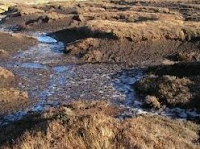A contractor who is bidding to carry out the next phase of heather regeneration work as part of the Moors for the Future Project in the Peak District is looking for a source of heather to cut for brash to be applied to bare peat.
The heather needs to be mature (probably at least 200mm tall) with access for cutting machinery and within reach of a road or track.
The contractor is looking for up to 70ha and is offering £2/T for the cut material. The amount of cut material produced will vary with the age and density of the heather but is likely to be in the range 25-75T/ha.
The contractor is a recognised and well-respected moorland contractor who has a range of specialised equipment to carry out this work and therefore will cause minimum impact on the ground.
The benefit of this for the landowner, is to provide some income in return for having an area of heather managed without cost.
If anyone is interested in this, please get in touch:
01387 723201 simon.thorp@heathertrust.co.uk



